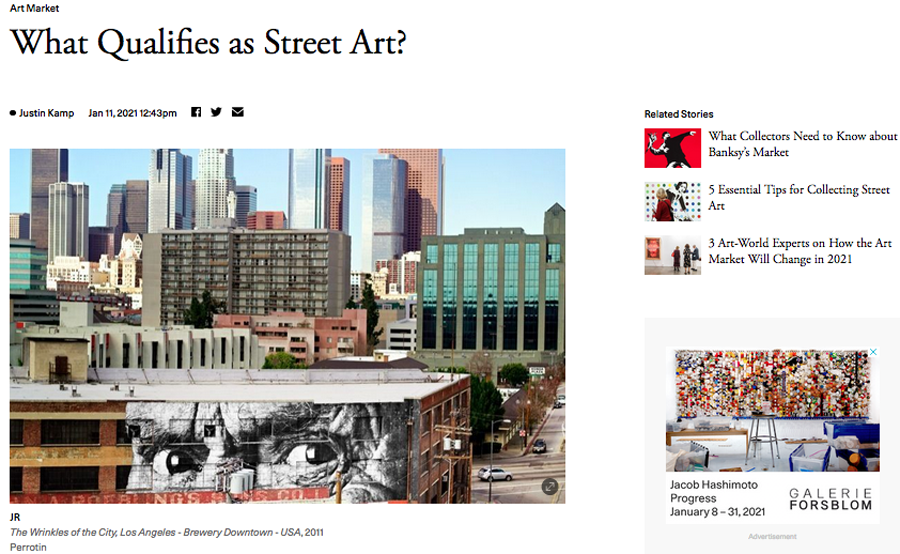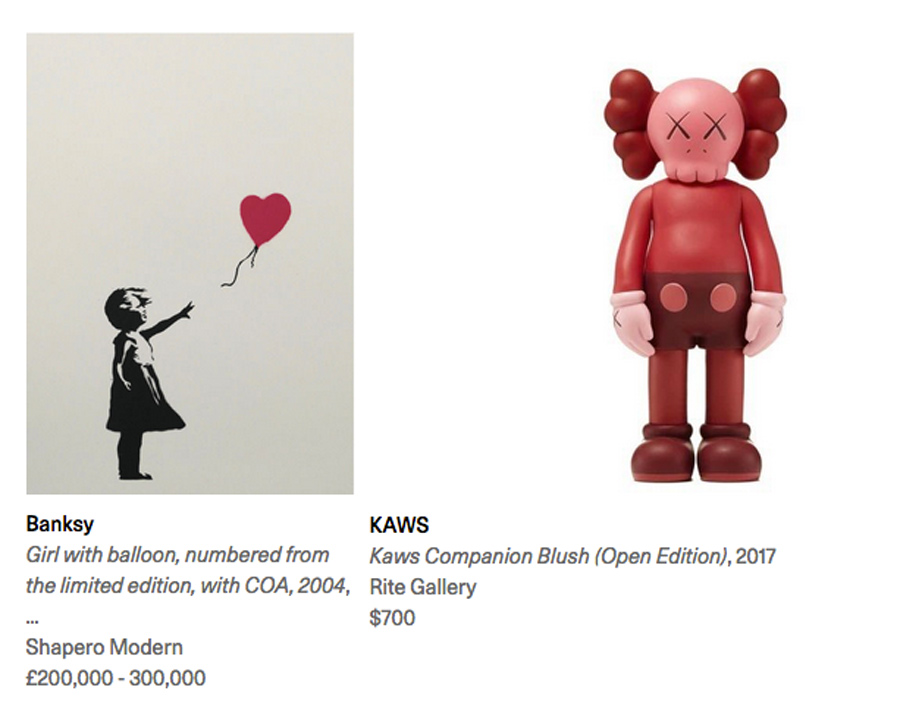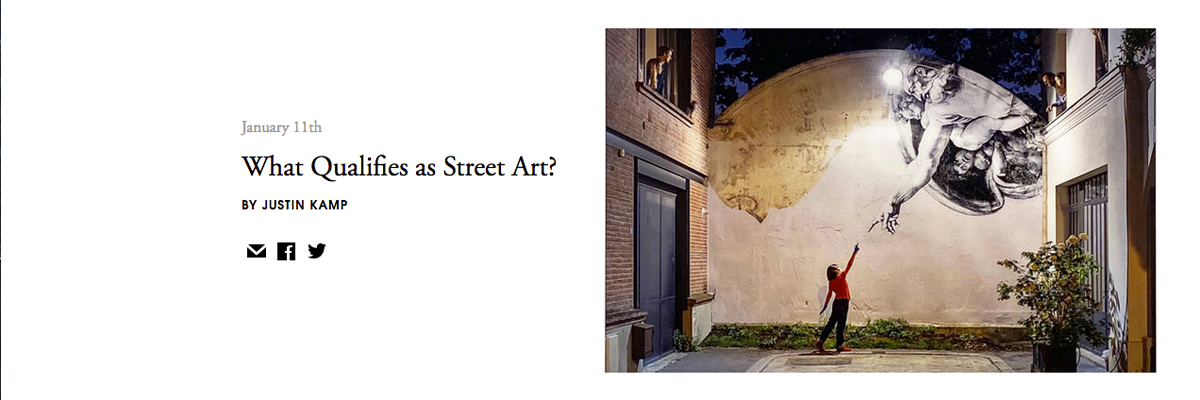We were happy to speak with journalist Justin Kamp recently about subtle and fine distinctions in terminology surrounding street art as it pertains to street practice, fine art, institutions, and collectors. Here are some out-takes from his recent column on Artsy.

“The ascent of so-called street artists into the moneyed realms of the blue chip is not exactly a new phenomenon—it’s been nearly two years since KAWS skyrocketed to a new auction record of HK$116 million (US$14.8 million) with the sale of The Kaws Album (2005) at Sotheby’s Hong Kong, which was followed six months later by the record-breaking sale of Banksy’s Devolved Parliament (2009) for £9.8 million ($12.1 million). These two mononym artists could be seen as the loosely defined category’s twin princes, despite their stylistic differences—KAWS’s vibrant cartoon riffs and Banksy’s wry stencils are two of the most easily recognizable, not to mention consistently lucrative, styles in contemporary art. But as collectors the world over continue to be fascinated with “Companion” figures and Girl With Balloon prints, the exact parameters of what constitutes “street art” remain nebulous. According to Charlotte Raybaud, head of 20th-century evening sales at Phillips in Hong Kong, the category comes with a certain amount of ambiguity baked in. “Street art is inherently hard to define,” Raybaud said. “It is difficult to categorize as sometimes it can feature graffiti, or other times more image-based work. The former oftentimes features alongside the latter, but I would say some uniting elements include the use of stencils and/or elements of reproduction, allusions to and questioning of everyday visuals or slogans, and of course its ‘street’ setting—or indeed proximity to its roots.” When highlighting street art works for potential bidders, Raybaud said she emphasizes both the above aesthetic elements as well as a piece’s conceptual underpinnings, which she said often center on themes of democratization.

Scholars of the category expressed similar views. Jaime Rojo and Steven P. Harrington, co-founders of the online street art community Brooklyn Street Art, stated that while graffiti art should be generally viewed as a distinct category due to its focus on lettering and authorial expression, the bounds of street art are more aesthetically slippery. “It may borrow heavily from advertising, branding, traditional mural making, and pop culture aesthetics or methods of creation and dissemination,” the duo said. While the category may focus more on figuration than graffiti, they said, it’s not limited to pictorial representation—conceptual, sculptural, electronic, and performance practices have been variously incorporated into the porous bounds of street art. Daniel Feral’s Feral Diagram—a riff on Alfred Barr’s similar diagram of the lineages of modernism for the Museum of Modern Art—maps the overlapping historical movements that congealed into street art’s interrelated practices, spinning a complex web of influences from Pop art and action painting to semiotics and the cut-up creations of Beat poetry…
CLICK HERE TO CONTINUE READING “What Qualifies as Street Art?” by Justin Kamp for Artsy.
 BROOKLYN STREET ART LOVES YOU MORE EVERY DAY
BROOKLYN STREET ART LOVES YOU MORE EVERY DAY










